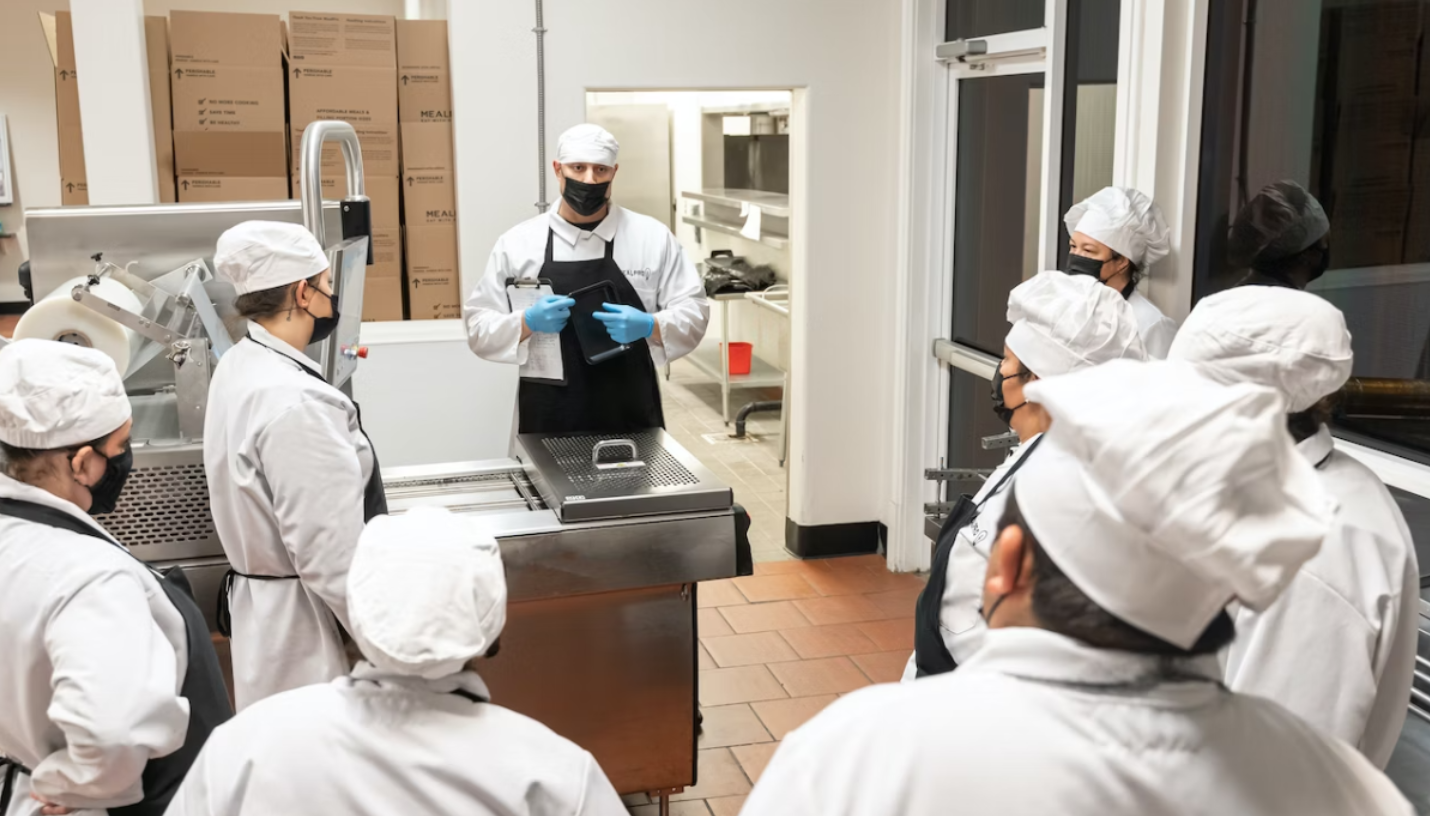Setting quality assurance KPIs in food manufacturing can be complex. If you think of KPIs in food quality assurance as balls to juggle, the more you set, the harder your job becomes. So we’re going to look at the different types of quality assurance KPIs you might consider, how to narrow down your options, and some examples to get you started.
Overview
- Importance of quality assurance KPIs in food manufacturing
- Types of quality assurance KPIs in food manufacturing
- Setting meaningful quality assurance KPIs in food manufacturing
- Food production quality assurance KPI examples
- Machines that facilitate quality assurance
Importance of quality assurance KPIs in food manufacturing
Quality assurance (QA) KPIs are measurable indicators of how well your food manufacturing company is meeting its quality and safety goals. With food recalls and safety incidents a constant concern, food quality and safety goals are essential for ensuring that food products are safe and meet consumer expectations.
By tracking QA KPIs, you can identify areas where improvement is needed and implement corrective actions. This can help to reduce the risk of food safety incidents and improve product quality, as well as increase the efficiency of the manufacturing process.
Types of quality assurance KPIs in food manufacturing
We can lump food manufacturing quality assurance KPIs into four categories:
- Safety KPIs
- Quality KPIs
- Efficiency KPIs
- Cost KPIs
Safety KPIs
Safety KPIs measure how well you’re protecting consumers from foodborne illness. These KPIs include:
- Number of food safety incidents
- Percentage of products that pass all food safety tests
- Compliance rate with food safety regulations
- Number of customer complaints related to food safety
- Number of product recalls due to food safety concerns
Quality KPIs
Quality KPIs measure how well you’re meeting quality standards and customer expectations. These KPIs include:
- Number of customer complaints related to product quality
- Right-first-time pass rate
- Sensory evaluations (e.g., taste, texture, appearance)
- Nonconforming product, including incidents, quantities, and cost
- Supplier quality cost
- Shelf life results
- Percentage of label compliance
Yield & efficiency KPIs
Process efficiency KPIs measure how efficiently your company is producing its products. These KPIs include:
- Percentage of overall waste loss
- Throughput of the manufacturing process
- Number of defects per month
- Cycle time (time it takes to produce a product from start to finish)
- Number of downtime events per month
- Packaging check Product net giveaway
Cost KPIs
Cost KPIs measure the financial impact of QA activities. These KPIs include:
- Cost of food safety incidents
- Cost of product recalls
- Cost of wasted products
- Cost of rework
- Cost of quality control and testing
Setting meaningful quality assurance KPIs in food manufacturing
So how do you work out which quality assurance KPIs are the most important to your business? This comes down to the particular quality assurance goals you set and your specific industry challenges.
For example, what are the most important food safety and quality risks that your business faces? Has your business experienced recent food recalls? Do you need to tighten up areas of waste and inefficiency in the manufacturing process?
Here are some other points to consider:
- What are our customers’ top priorities when it comes to food safety and quality?
- What QA KPIs are other food manufacturers tracking in our industry?
- What are the average performance levels for these KPIs?
- Which QA KPIs will give us the most actionable insights into our performance?
It’s usually recommended to identify and stick to 4 or 5 core KPIs to ensure you’re not spreading yourself too thinly.
Food production quality assurance KPI examples
The key thing about determining QA KPIs is aligning them to your business and specific goals. For example, a meat processing company might focus on:
- Customer complaints related to product quality (e.g. off-colour products, bone fragments in food)
- Chemical lean percentage
- Foreign body detection results
A ready-meal producer might prioritise:
- Percentage of products that meet quality standards (e.g. nutritional content, sensory quality, allergen labelling)
- Sensory quality of products (e.g. taste, texture, appearance)
- Cost of wasted products and/or rework
Machines that facilitate quality assurance
Technology plays an important role in quality assurance and safety. Food Standards Australia & New Zealand had this to say regarding food safety:
“Over time broader regulatory oversight, improved self-monitoring by food businesses and greater consumer vigilance have helped to strengthen problem detection. Continued advancements in food technology, analytical testing and traceability are also expected to influence the number of food recalls.”
With this in mind, FPE supplies a range of world-leading food inspection equipment from Eagle PI.
Eagle’s machines are full-scale multi-tasking food quality assurance systems, capable of helping manufacturers improve their food safety, quality and production efficiency by simultaneously performing the following checks:
- Foreign body detection
- Fill level inspection
- Mass measurement
- Seal inspection
- Component counts
If you’d like to learn more about the quality assurance machines we supply, or about setting quality assurance KPIs in food manufacturing, get in touch with the FPE team today on 1800 882 549 in Australia or 0800 100 003 in New Zealand.






